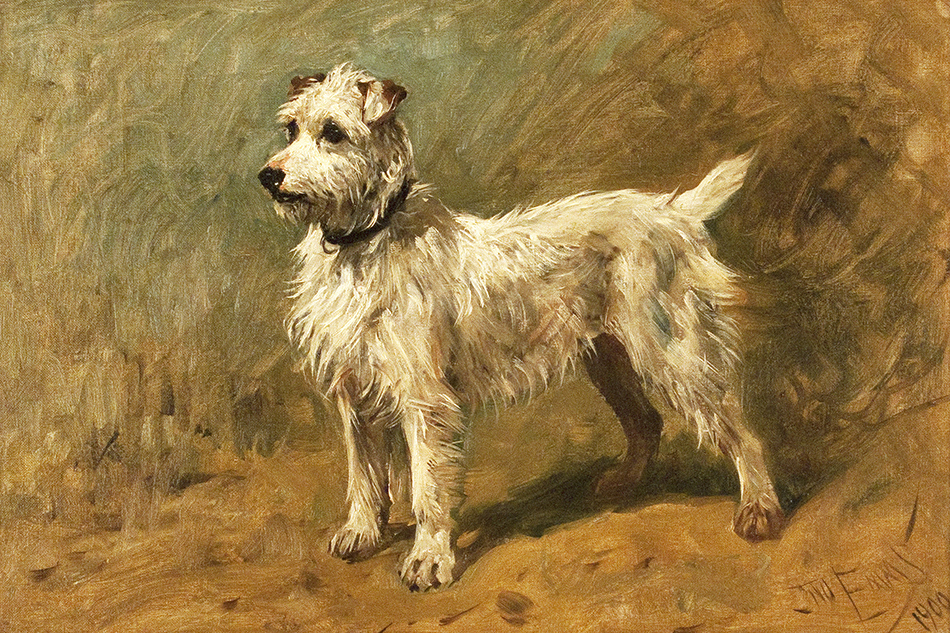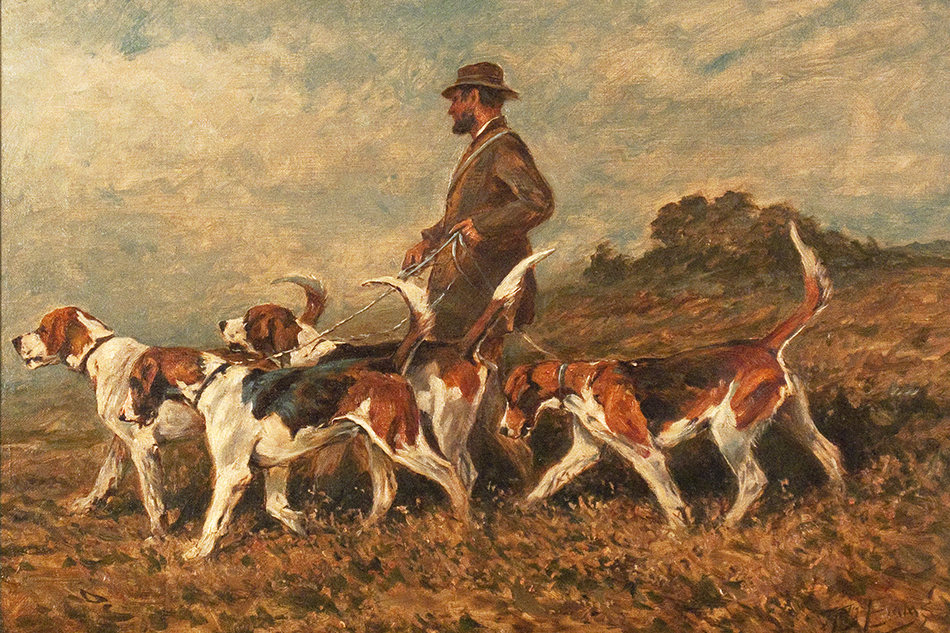
February 12, 2014Works by John Emms in a show at the William Secord Gallery through March 15 include Run to Earth, 1893. Top: Princess de Montglyon’s Champion Collies, 1900. All images courtesy of the gallery
The English painter John Emms (1843–1912) was one of the finest dog painters of the 19th century, known for his lively depictions of foxhounds in the kennel and on the field. Sought after by aristocrats and prominent dog fanciers, he won a lifetime of commissions to record a wide variety of hounds, spaniels, terriers and the odd mutt. He was lucky enough to live in the affluent Victorian era, when dogs ruled.
Hung concurrently with the just-completed Westminster Kennel Club’s Dog Show — the annual event during which dogs rule in New York City — an exhibition at the William Secord Gallery presents 53 Emms pictures from his heyday, the 1860s through the 1890s.
Secord says the show, called “Paintings of the Sporting Life” and running through March 15, is the largest and most comprehensive exhibition of the artist’s work ever. “In the past, you would only see one or two of Emms’s pictures on the market at one time, but in this show you can trace his evolution as an artist over fifty works,” Secord explains. (Prices range from $7,000 to $185,000.)
The son of artist Henry William Emms, John Emms grew up in rural Norfolk. Little is known about his early training. He left for London as a young man and by 1866 he had a painting accepted by the Royal Academy. (He continued to exhibit there regularly until 1906.) He was apprenticed to the academic painter Lord Frederick Leighton.

Black and Tan Dachshund, 1875
“Leighton was known for his highly finished portraits, as well as religious and mythological scenes, and he appears to have had no influence on Emms’s style of painting,” Secord says. Instead, “Emms began to develop his characteristic and individual style of painting, in which he applied quick, broad strokes of paint to create almost Impressionist depictions of dogs and other animals.”
Leighton did, however, introduce Emms to the English town of Lyndhurst, in New Forest (a vast nature park near Southampton), and Emms went to settle there as soon as he could. He soon became an accomplished equestrian and avid hunter, which no doubt contributed to his love of field sports — and their participants, hunters and hounds.
“Emms’s knowledge of canine anatomy is apparent everywhere,” Secord says. “He knew his subject matter well, and he took great pains to capture the individual nature of his subjects. When doing large, multi-hound compositions, for instance, he would often do sketches of individual hounds before painting the larger picture.”

Waiting to Go Out, ca. 1890
Emms was also a dashing character, known for wearing a full-length coat and wide-brimmed hat. “Part of Emms’s success and popularity as an artist was his outgoing personality,” Secord says. “He socialized with his clients, and, after selling a painting, he would sometimes get in trouble, running up bills at expensive London hotels and restaurants. When the money ran out, he would return to his family in Lyndhurst to live a much quieter life.”
In 1902, he is thought to have had a cerebral hemorrhage, and he was eventually paralyzed, unable to work and reduced to living a hand-to-mouth existence. He sold his house. One patron, the Duchess of Newcastle, wrote an appeal for help in the newspaper: “Like most artists, he has lived up to the level of his blue china and has not made any provision for a rainy day.” She herself contributed ten guineas. He died in 1912 of another cerebral hemorrhage.
“Emms developed a unique style of painting that set him apart from his contemporaries, and one that was ideally suited to the depiction of dogs and animals,” Secord notes. “He will always be known for his ability to capture the essence of a subject with seemingly effortless applications of paint.” As this show proves, his work lives on to charm and delight us today.





